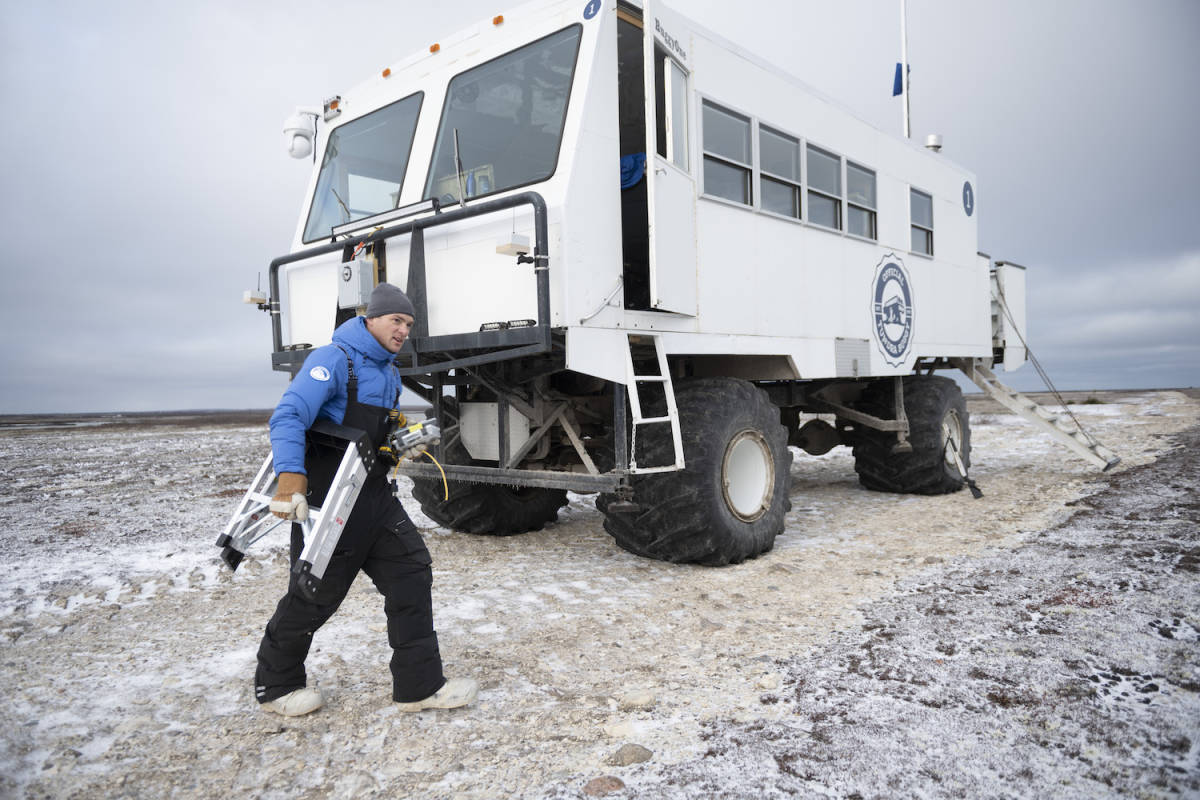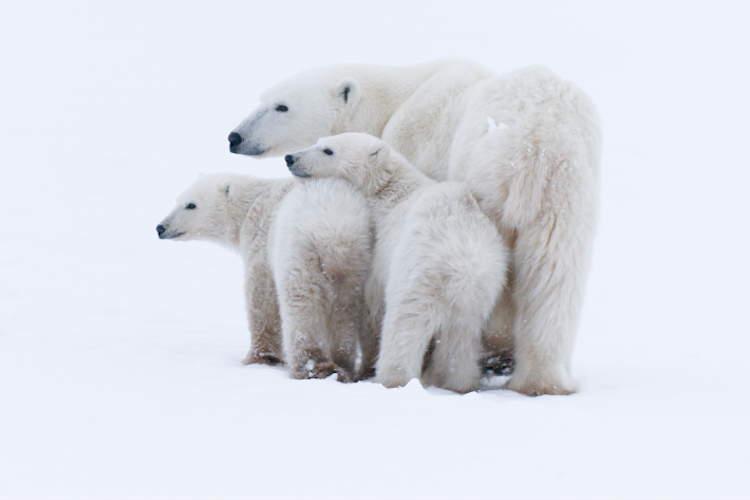In the beginning, more than 15 years ago, the notion seemed ambitious and a bit crazy: Would it be possible to air live broadcasts from the tundra near Churchill, Canada, during the annual gathering of polar bears? Or to stream live polar bear cams?
Thanks to the generous donation of a specially outfitted Tundra Buggy from one of our longtime sponsors, Frontiers North Adventures, and a clever internet set-up, every year during polar bear season in Churchill, Polar Bears International hosts livestreams and webcasts direct from the tundra. “Buggy One” is bursting with electronic equipment to make such communications possible; but broadcasting from the tundra poses challenges, and all the equipment in the world won’t help unless you have the right people to run it. For 15 years, B.J. Kirschhoffer was PBI’s Director of Field Operations until taking up a position with our partners at explore.org earlier this year. Here, he gives some insight into what is involved in being able to broadcast live from polar bear country.
So, first, can you give me a sense of some of the challenges in establishing a fast and reliable Internet connection on the tundra?
The tundra is vast and flat, so In the beginning, the biggest challenge was simply finding enough places that were tall enough and close enough together to mount antennas. Once we had figured that out, then all the other pieces—powering things, maintaining them, and keeping everything snow- and ice-free—were the follow-up challenges. Now, in the last 12 months, Starlink has emerged as an option that has made life much easier.




















